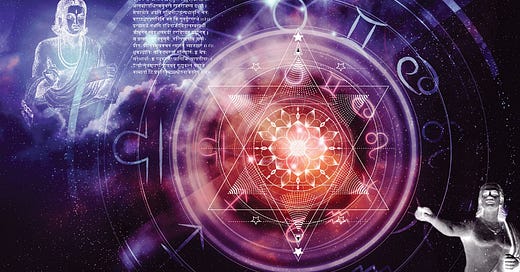Unveiling Cosmic Marvels: Exploring Ancient Indian Astronomy's Secrets Through Ingenious Observatories and Timeless Instruments
"Discover the celestial wonders of Ancient Indian Astronomy: Dive into the genius of observatories and instruments that shaped cosmic exploration! 🌌✨ #AncientWonders #Astronomy"
Introduction:
Welcome to another edition of "Ancient Wonders," where we embark on a celestial journey through the annals of history. In this installment, we delve into the fascinating realm of Ancient Indian Astronomy, exploring the awe-inspiring observatories and ingenious instruments that ancient Indian astronomers used to unravel the mysteries of the cosmos.
Ancient Indian Astronomy: A Historical Prelude:
Before we gaze upon the celestial marvels that dot the Indian landscape, let's briefly journey through the historical tapestry of ancient Indian astronomy. Dating back to the Vedic period, Indians were keen sky watchers, with the Vedas containing hymns that vividly describe celestial phenomena.
As time unfolded, astronomy evolved into a sophisticated science, and ancient Indian astronomers made significant contributions to the understanding of celestial bodies. The creation of observatories and instruments marked a pivotal point in their pursuit of cosmic knowledge.
Observatories: Pillars of Cosmic Exploration:
1. Jantar Mantar, Jaipur:
Nestled in the heart of Jaipur, the Jantar Mantar stands as a testament to the genius of Maharaja Sawai Jai Singh II, an avid astronomer himself. Constructed in the early 18th century, this UNESCO World Heritage site boasts a collection of 19 instruments designed for precise astronomical observations.
Among these, the "Samrat Yantra" stands out—a colossal sundial that can measure time with astonishing accuracy. The Jantar Mantar's geometric precision and alignment with celestial bodies showcase the advanced astronomical knowledge of its creators.
2. Ujjain:
The ancient city of Ujjain, situated on the banks of the Shipra River, houses the revered Ujjain Observatory. Commissioned by Jai Singh II, this observatory comprises a series of instruments that track celestial movements, eclipses, and planetary positions. Notable instruments include the "Nadivalaya," an equatorial sundial, and the "Dhruvagraha Yantra," designed for observing the pole star.
Instruments of Cosmic Inquiry:
1. Astrolabe:
The astrolabe, an ancient astronomical instrument, found its place in Indian observatories. Used for solving problems related to time, navigation, and celestial positioning, the astrolabe became an indispensable tool for astronomers. Intricately designed with concentric rings and celestial markings, it allowed astronomers to make precise calculations.
2. Gnomon:
A fundamental instrument in Indian astronomy, the gnomon played a crucial role in measuring time and determining the position of celestial bodies. Variations of the gnomon were employed in different observatories, each tailored to specific astronomical observations.
3. Yantras:
Yantras, or astronomical instruments, took diverse forms in ancient India. From quadrant dials to circular instruments like the chakra yantra, these tools enabled astronomers to make accurate measurements of celestial angles, declinations, and planetary positions.
Legacy and Impact:
The legacy of ancient Indian astronomy endures through its impact on subsequent scientific developments. The precision and ingenuity displayed in the construction of observatories and instruments laid the foundation for future advancements in astronomy.
Conclusion:
As we conclude our cosmic expedition through ancient Indian astronomy, we marvel at the intellect and vision of those who gazed upon the stars centuries ago. The observatories and instruments they crafted not only stand as architectural marvels but also symbolize a profound connection between human intellect and the celestial dance of the cosmos.
Join us in the next edition of "Ancient Wonders" as we uncover more treasures from the past, unraveling the mysteries that have shaped the world we inhabit today. Until then, may the wonders of the ancient sky continue to inspire our exploration of the cosmos.




